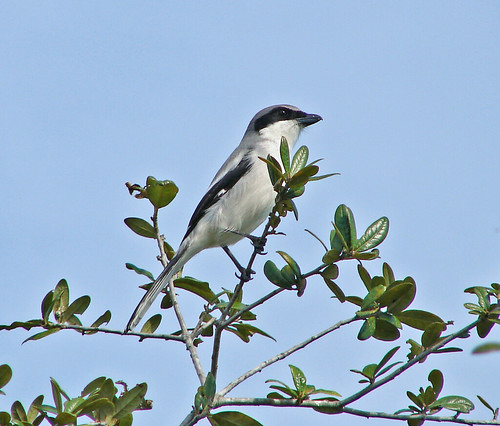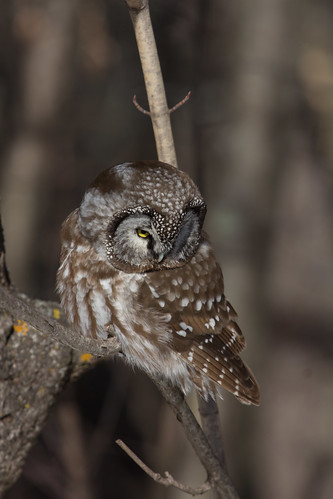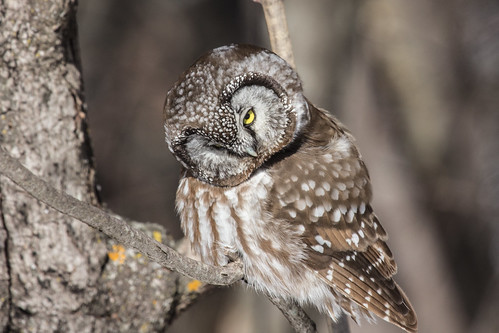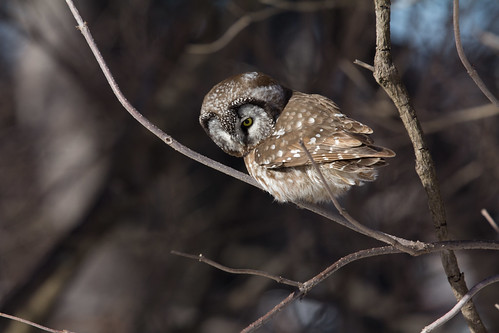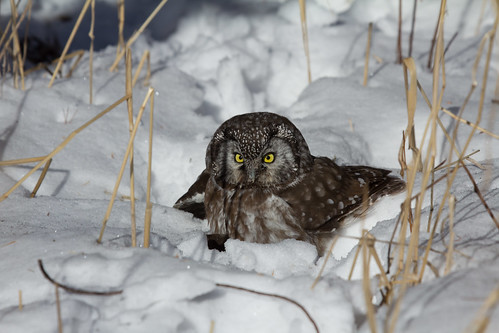Several years ago, I realized that by just adding a properly placed space, I could transform Super Bowl Sunday into Superb Owl Sunday. Last year Russ and I were in New York City visiting our daughter Katie and her S.O. Michael on the big day. We decided to head out to Breezy Point Tip on the city’s ocean front to at least get out into the wild for a while, when what to our wondering eyes should appear but two Snowy Owls! One was a very mature adult male, his plumage snow white. I’ll never forget that thrilling and unforgettable day, even richer for sharing it with my family.
 |
| Snowy Owl in NYC on Superb Owl Sunday, 2012, not enlarged or cropped |
 |
| That Snowy Owl after cropping |
This year I was certain things couldn’t possibly go that well ever again on Superb Owl Sunday, but figured I might be able to see an owl somewhere. During the past two weeks, Boreal Owls have been appearing all over between Duluth and Two Harbors, and a few weeks ago, Ryan Brady even had one in his yard in Washburn, Wisconsin, and so birders from all over the country are descending upon Duluth to see them. Boreal Owls periodically “irrupt”—that is, large numbers of them suddenly appear well south of their breeding range. This is a well-known, if rare, phenomenon. Birders rejoice, because except in rare years like this, this secretive owl is one of the hardest of all regularly occurring North American birds to add to a lifelist, but it’s a mixed blessing because the adorable little predators are so desperately hungry that they must hunt at midday, usually coming up empty. Tour groups are seeing as many as seven in a single day, but I feel like I’m gawking at someone in their time of misfortune, so I seldom go out to look for them.
But yesterday being Superb Owl Sunday, my doing a big year, and Russ and I having a couple of free hours, we headed up to Two Harbors. I was hoping we’d luck into spotting a Boreal Owl tucked into a conifer somewhere along the scenic highway—owls hiding out in spruces and cedars probably had successful hunting the night before. It’s tricky to spot one when zipping by in heavy traffic, but when so many birders are afield searching, one may spot a pack of birders already watching one. Russ and I had no such luck, so when we got to Two Harbors, we headed straight to Fourth Avenue—there’s a 2- or 3-block alley behind the houses there where I’ve seen Boreal Owls several times in the past. We spotted seven deer, including a handsome buck, but didn’t hear or see a single chickadee, much less a Boreal Owl.
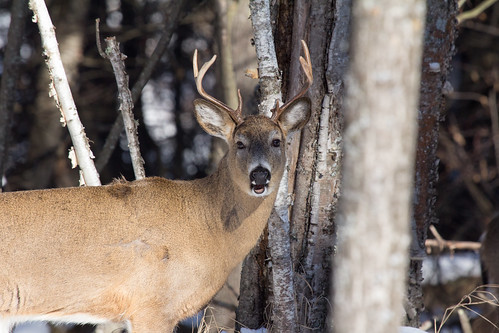 |
| This and six other deer walked past us in the woods behind the alley |
Right as we were growing discouraged, from the road above, one of my birding friends spotted me and drove down to the alley to tell us about a saw-whet owl he’d seen just a few blocks away. If I were to come up with a top ten list of my favorite birders in the world, Jim Lind would definitely be on it. He’s a great and generous birder who produces our area’s weekly rare bird reports and compiles the Duluth Christmas Bird Count. In years like this, Jim spends his free time searching out good birds in Two Harbors, and obviously goes out of his way to help other birders see them. And he has the best Boreal Owl Karma of anyone in the known universe. He hadn’t spotted one yet in Two Harbors on this Superb Owl Sunday, but the even tinier owl he’d spotted a little while before was a great sighting. We chatted for a few minutes, until he had to be going and we were ready to move on for the Saw-whet. We said our goodbyes, and right as he was turning away, his eyes locked on a Boreal Owl only about 15 feet away! Right there in the open, right beside us!
 |
| See what Jim Lind found? Right next to us!! Was the little owl there all along? |
The bird was alert, so focused on searching for the sounds of small mammals that s/he ignored us. When Jim moved on, I kept photographing the little thing.
S/he flew to two other branches and a stump, coming even closer than where s/he started out. Alighting on the flat stump, s/he held one foot up and used a wing to balance on one branch, so I think the raised foot was injured. I felt sorry for the little thing, regretting seeing him/her even as I clicked my camera shutter over and over as s/he looked sharply this way and that, desperate for a meal.
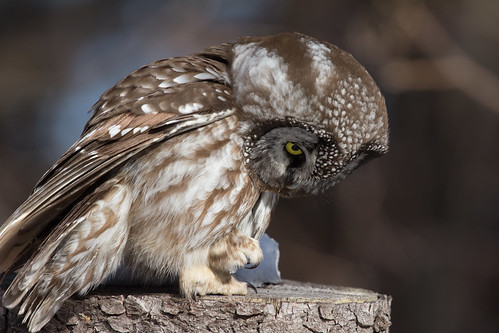 |
| The left foot appears to be injured, though s/he managed to catch and carry a shrew. |
Right when I was feeling sadder than joyful to be witnessing such intense hunger, the little owl plunged into the snow and pulled out a fairly large shrew.
Chickadees noticed the tussle and started gathering, chickadee-dee-deeing every naughty expression they knew.
 |
| This chickadee was saying several naughty words! |
The Boreal Owl took off, carrying a nice hot lunch with him/her, and dropped down on the ground behind a fallen log under a tangle of branches to try to eat in peace. Russ and I walked away in great relief that the little mite wouldn’t spend the day hungry.
 |
| Going off to eat in peace! |
If this 20-minute encounter with a Boreal Owl wasn’t enough, we went to the spot where Jim Lind’s Saw-whet Owl was spending the day. That little guy was roosting on an exposed branch, carefully keeping both eyes closed to avoid notice by chickadees. Some people spent last evening watching a flock of ravens playing football, but not us. We’d already experienced the best Superb Owl Sunday ever.
 |
| Northern Saw-whet Owl |
Total miles for day: 65. New species bringing total for year to 188:
- Boreal Owl
- Northern Saw-whet Owl






